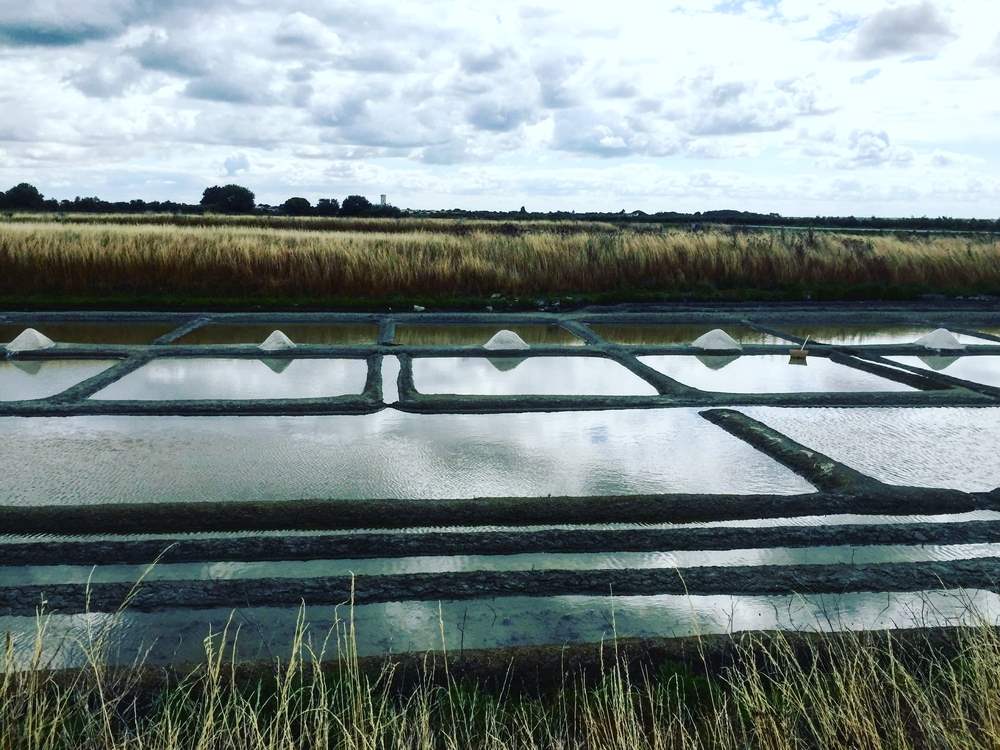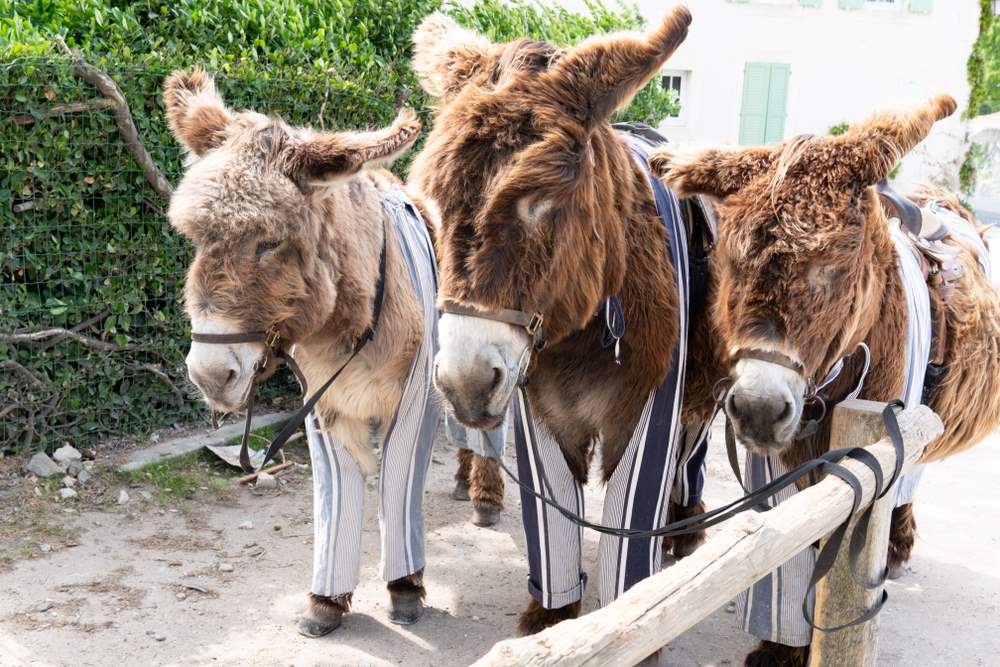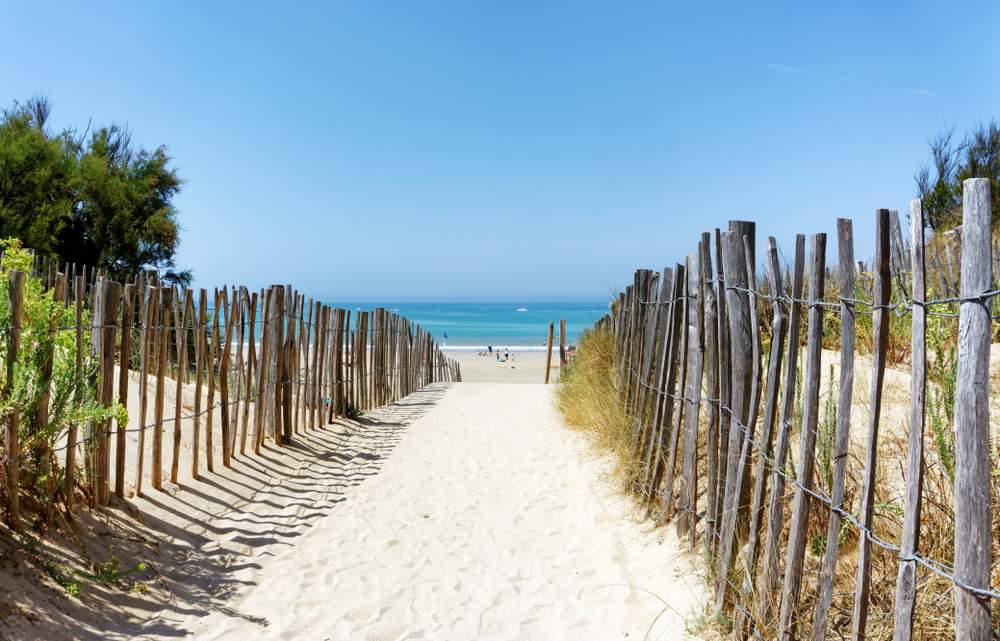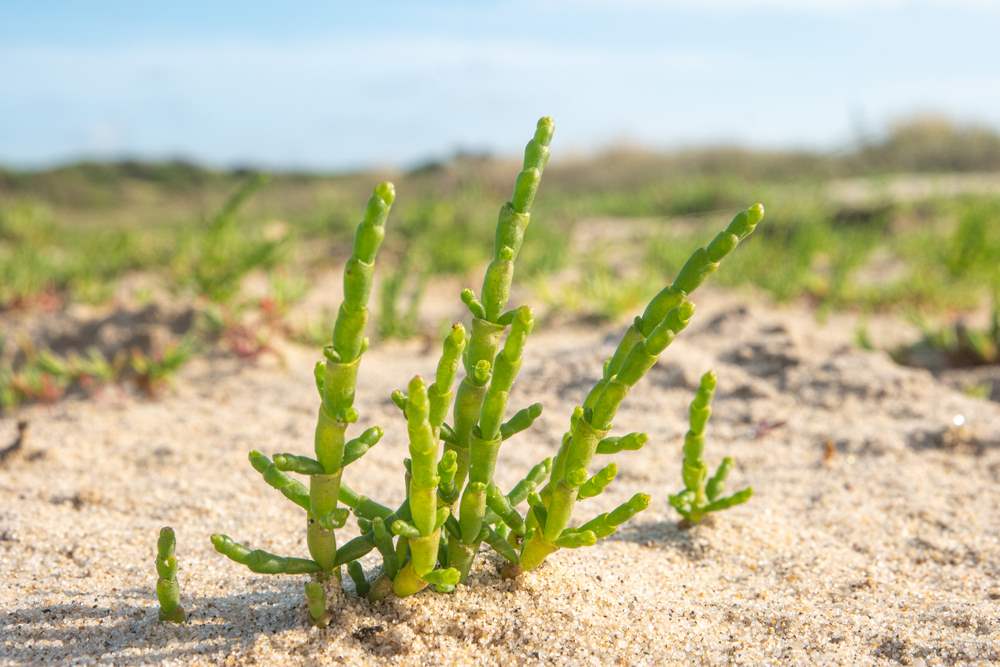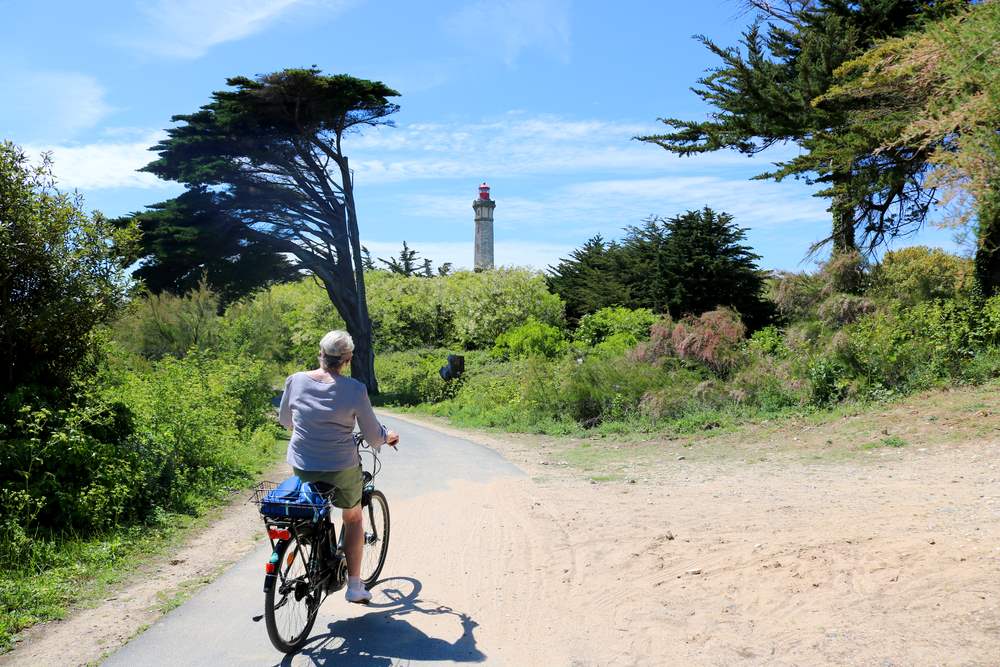Visit and discovery of the Ile de Ré
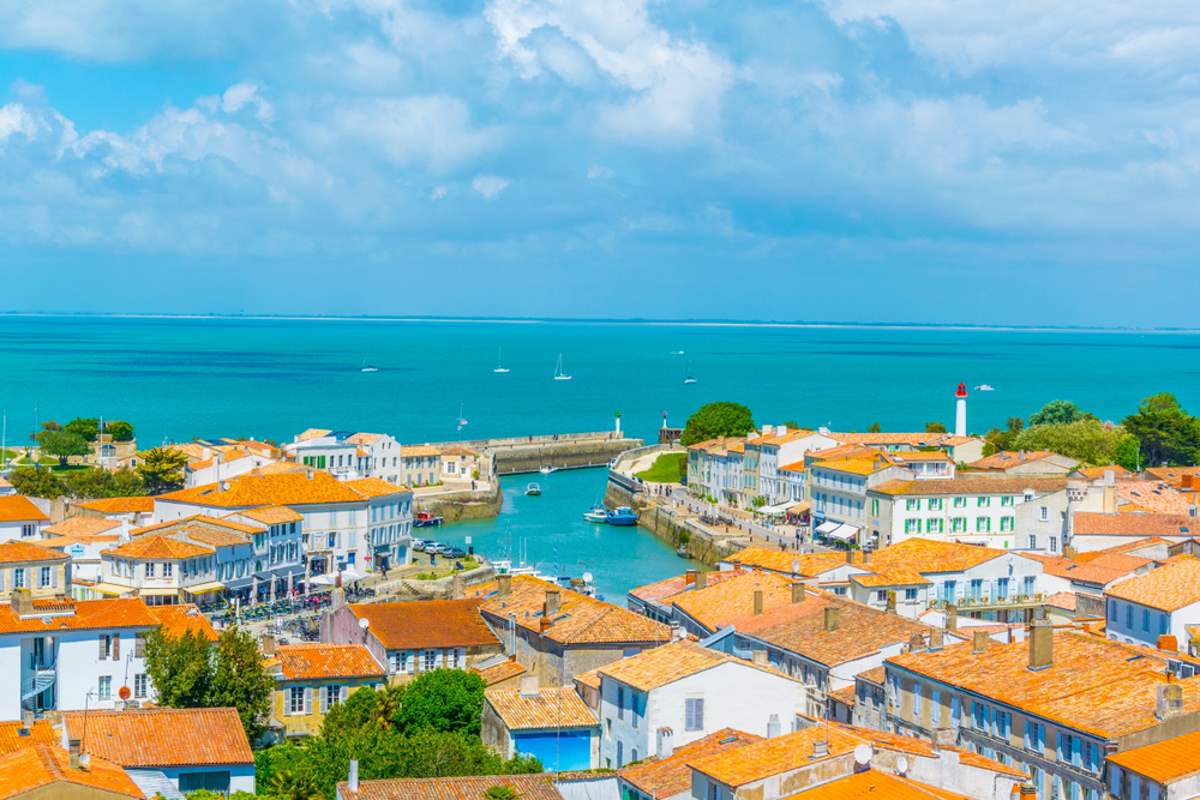
France’s4th largest island was once attached to the mainland, but that was more than 20,000 years ago. Its history, like that of many islands, was tumultuous. Today, it has become an extremely popular tourist attraction with both French and foreign visitors, and with good reason: its listed heritage, white sandy beaches and gastronomy are just some of the attractions that make you want to discover this island of many treasures! There are activities and sites to suit families and groups of friends of all ages. Nicknamed Ré la blanche (white Ré) because of the characteristic colour of its traditional houses, the island of Ré has something for everyone, from sports enthusiasts to those who prefer to laze around, from wine lovers to those who love spectacular photos, and from history buffs to architecture buffs… Here’s a little guide to the island of Ré that will have everyone agreeing on the destination for your next holiday! Ready to cross the island bridge?
What to do on the Ile de Ré
The Ile de Ré is a holiday destination par excellence, with so much to do. Here’s a small selection of the must-sees in the villages of the Ile de Ré:
1 – The Bois-Plage-en-Ré market on the Ile de Ré
This is the biggest market on the island, with craftsmen and producers on hand every morning during the summer, and on Tuesdays, Thursdays, Saturdays and Sundays the rest of the year. Culinary specialities and local crafts will fill your basket with gifts, souvenirs and mouth-watering victuals: fruit, vegetables, spices, cheeses, pastries, seafood, charcuterie – you name it! Up to 130 traders are waiting to welcome you to this postcard-perfect market of local colour.
The markets in Flotte, La Couarde and Loix are less busy than the one in Le Bois-Plage-en-Ré, if you’re not too keen on crowds.
2 – The Whale Lighthouse
Located in Saint-Clément-des-Baleines, this 60-metre-high lighthouse offers an absolutely splendid 360° view of the island. Take a trip around the island from the top of the Whale Lighthouse. The museum is packed with particularly interesting and sometimes unusual information about life in the lighthouses and their history. The old 17th century tower takes you up to a more modest height of 30 metres, and was the first lighthouse. The whale park offers a calm and relaxing walk accompanied by birdsong on the enchanting island of Ile de Ré.
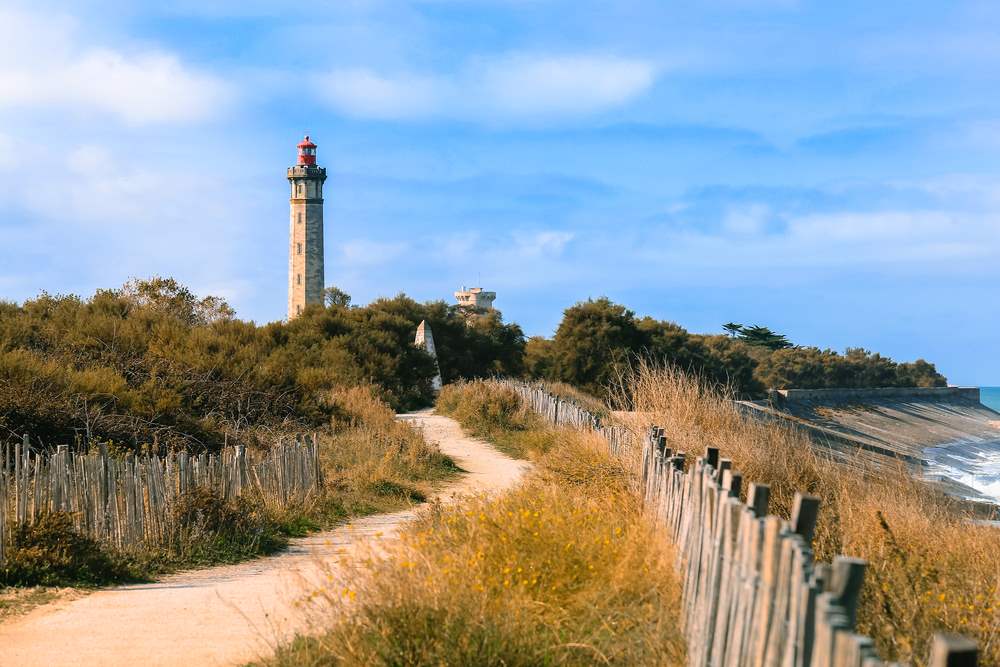
This legendary site is a must-see for the beauty of the monument, the exceptional view from the top of the lighthouse and the perfect photo opportunity! The lighthouse is located in the commune of Saint-Clément-des-Baleines.
The icing on the cake: you’re just a stone’s throw from the Conche des Baleines beach, so you can finish the day in style!
3 – The Lilleau des Niges reserve
In this 121-hectare reserve, you’ll have the chance to observe a wide variety of birds depending on the season, as this nature reserve is a stopover for migratory birds. The LPO (League for the Protection of Birds) looks after its little protégés all year round, organising walks to explain the biodiversity, fauna and flora of the reserve. Free or guided walks, this place is magnificent in every way.
4 – Les Châteliers Abbey
This is where it all begins on the Ile de Ré. The monks who built this abbey in the 12th century brought with them their knowledge and know-how, which helped to develop the island’s economy and then enrich it. From wine-growing to salt marshes and fish ponds, the monks transformed the island of Ré into a key location for the wine and salt trades. Sadly, the abbey was partially destroyed during the Wars of Religion, but this listed historic vestige, with its abbey church, galleries, cloister garden and former refectory, reveals all the past beauty of this essential monument.
The guided tour will tell you a lot about the history of the Ile de Ré, while allowing you to admire the remains of the past splendour of what was once one of the largest abbeys in the region.
5 – The Quillet workshop
This workshop is a national benchmark for the conservation and restoration of old documents. This traditional manual skill has been handed down from generation to generation, and is explained during guided tours. If you’re a lover of old books, you might just find a unique piece during your visit!
6 – Fort la Prée
A historic monument with many lives. Built in the 17th century at the request of King Louis XIII, it is the oldest military monument on the Ile de Ré. Initially built to establish royal power in the face of Protestant reluctance, it was redesigned by the famous engineer Vauban, then occupied by the Germans during the 2nd World War, and finally transformed into a holiday camp in the 1950s! Today, it can be visited from April to September, and a guided tour is recommended as it is very interesting. However, beware: the fort also hosts many private parties, so it is closed to the public. It’s best to call before you go! Games, re-enactments and treasure hunts are organised and period costumes are on loan, much to the delight of families and groups.
7 – The salt marsh ecomuseum
An open-air museum where you can discover the history of salt farming and the salt marshes: the techniques used in salt production and the fauna and flora of the salt marshes. This ancestral know-how, which almost disappeared, has fortunately been revived by motivated young producers who have brought the marshes back to life. If you want to see how the harvests are carried out, you’ll need to stay on the Ile de Ré between June and September.
8 – Meet donkeys in their breeches
They’re unusual enough to pass up! These magnificent Poitou donkeys are waiting for you in Saint-Martin-de-Ré, dressed in cloth trousers. But don’t be fooled by the fact that this is not a recent invention to amuse tourists, but rather a tradition dating back to the time when farm work was done not with farm machinery, but with the precious help of donkeys. And to protect them from the flies and mosquitoes that were not lacking in the marshes, the donkeys were dressed up to prevent them from being bitten by these unwelcome insects! Children are sure to enjoy a donkey ride in their knickers, and the Parc de la Barbette is a great place to take a stroll, enjoy the play areas, go cycling…
9 – The port of Saint-Martin-de-Ré
This is a place where there’s always something going on, whether it’s during the day or in the evening. You’ll come across street artists, orchestras and a craftsmen’s market. Shops, restaurants, a merry-go-round for children, an art gallery… The setting is very pleasant, the atmosphere relaxed, people stroll around, have a drink on the terrace, it’s a place where you like to stroll around, pick up souvenirs, or simply appreciate the authentic aspect of the port.
10 – The Observatory Bell Tower
From the top of the bell tower, you can enjoy a superb panoramic view of the island of Ré. The old clock and bells are a thing of beauty, and at the top of the staircase is a terrace where you can see the remains of a fortified church where the gargoyles still stand guard… In the distance, the Vauban town.
11 – The Citadelle of Saint-Martin-de-Ré
This military structure, built in 1690 by François Ferry with the backing of Vauban, was designed to protect the island of Ré from English invasion. From the 19th century onwards, the citadel was used as a temporary prison for prisoners sentenced to forced labour, who were then sent by sea to the penal colony in French Guiana and New Caledonia. The citadel has been a penitentiary since 1938, and is still home to up to 400 inmates.
12 – The Ernest Cognacq Museum
The main events and the history of the island of Ré are brought together in this museum in the form of a wide variety of collections: art, furniture, photos, films, a magnificent collection of models linked to maritime life, ceramics and regional earthenware. This historic monument was once a military arsenal, then a place of detention for convicts sentenced to the penal colony of French Guiana and New Caledonia before their departure. Objects and images tell the story of this part of the island’s history.
Thanks to this museum, you can learn all about the history of the island of Ré through the ages: archaeology, wine-growing, salt, military and prison history, Vauban sites, maritime life… Travel through time and history and stroll through the magnificent formal garden of this 15th-century mansion.
The Vauban fortifications of Saint-Martin-de-Ré have been on UNESCO’s World Heritage List since 7 July 2008.
What to do in the evening on the Ile de Ré?
Here are 2 places to go out with friends for a drink and a party
1 – Pub des 5
This bar offers a wide choice of French and foreign beers, and evenings are also organised around sport or music with concerts, all in a friendly atmosphere.
2 – Bastion Club
This nightclub has 2 large rooms and a terrace overlooking the sea. On the ramparts of Vauban, this club offers a prestigious and magnificent setting for its DJ or theme nights. A big plus: free shuttles are available for customers!
And don’t forget that Le Bastion is also a restaurant serving home-cooked food made from local produce.
What are the most beautiful beaches on the Ile de Ré?
1 – La Cible beach at Saint-Martin-de-Ré
200 m long. During the summer, white bathing cabins are installed and a wide range of activities are on offer (kitesurfing, kite flying, fishing, fishing on foot, surfing and sailing), as well as a wide range of services:
- Picnic area
- Bathing cabin hire
- Boat trips
Supervised beach in July and August, dogs are not allowed.
2 – Gollandières beach
Several kilometres long, this fine sandy beach offers a beautiful view of the Ile d’Oléron, as well as numerous activities (bodyboarding, windsurfing, surfing and sailing) and services:
- Tiralos
- Access ramp to the beach
- Parking reserved for GIC-GIG
- Nautical schools and clubs
- Children’s club
- Travelling library
- Picnic area
3 – La Grange beach
This is a protected natural area close to the Pointe de Grignon. Please note that this beach is only accessible at high tide, as rocks prevent swimming at low tide. On site there is: free parking, a bar and restaurant, toilets. Activities :
- Bodyboarding
- Kite flying
- Fishing
- Fishing on foot
- Surfing
- Sailing
4 – Gros Jonc beach
This popular fine-sand beach offers calm seas and plenty of facilities: toilets, showers, bar, restaurant and free parking nearby. Activities :
- Bodyboarding
- Windsurfing
- Surfing
5 – La Conche des Baleines beach
A very large beach stretching from the whale lighthouse to Les Portes-en-Ré, on the edge of the Lizay forest, a beautiful, wild and authentic beach. The following activities are available:
- Kite-surfing
- Bodyboarding
- Kite flying
- Fishing
- Fishing on foot
- Windsurfing
- Surfing
- Sailing
6 – Trousse Chemise beach
An authentic, wild beach with sailing, fishing and a picnic area. A peaceful spot.
The Plage des Grenettes in Sainte Marie de Ré is the place to be for lovers of board sports, particularly surfing.
What activities are available on the Ile de Ré?
The island of Ré, with its 85 km², is the ideal place for a holiday with family and friends, for sports enthusiasts, relaxation seekers, history buffs and lovers of magnificent scenery. Situated in the Poitou-Charentes region, close to La Rochelle, it has the considerable advantage of being able to appeal to everyone. Relaxing on the white sand or pebble beaches, the charm of the sea or the old stones, cycling or discovering the salt marshes, there’s so much to do on this island that’s not just beautiful.
Here’s a selection of must-do activities to suit all budgets and temperaments!
1 – Canoeing, kayaking or paddle-boarding in the Ile de Ré salt marshes
The village of Loix is made up of several salt marshes, giving you the chance to explore the island in a way other than on foot or by bike, by gliding through the heart of the marshes on your little boat! If you’re lucky, you might even catch a glimpse of the salt workers in action during the salt harvest (June to September), an ancestral trade in which the same gestures have been reproduced from generation to generation since the Middle Ages.
2 – Discover the Lilleau des Niges National Nature Reserve
Located on former salt marshes, this reserve is managed by the Ligue Protectrice des Oiseaux (LPO). In spring and autumn, you’ll have the chance to discover the migratory birds that travel from the Arctic to Africa, as well as a variety of flora and fauna: sand dunes, marshes, forests, villages… From the Maison du Fier, themed outings are organised to help you better understand the diversity of birds and landscapes on offer. You’re guaranteed to fall in love!
3 – Visit the Cave Coopérative des Vignerons de l’Ile de Ré
Wines, Pineaux des Charentes and Cognacs, you’ll have the chance to visit the distillery and the cellars, as well as taking part in a wine tasting session with local products: sausage, cheese, chocolate… In the commune of: le bois plage en Ré.
4 – Discover the salt marshes
There used to be thousands of salt marsh workers on the island before the trade declined in the 19th century. Today, there are only a hundred or so still practising this craft. Discover the typical heritage of the Ile de Ré, the special techniques that require a certain dexterity and enjoy the landscapes that change according to the light… The salt marsh eco-museum organises visits to find out more about the history of this activity that has long been the lifeblood of the Ile de Ré.
5 – Discover the Ile de Ré Salicornia
The island’s green gold is grown in the salt marshes. It’s also known as the sea gherkin and is eaten in different ways (raw or cooked) depending on the season! The Ferme des Producteurs Ré Unis in Bois-Plage will tell you more about this plant, which is sure to surprise you!
6 – Visit the Ferme des Baleines
This aquaculture farm offers a wide range of products grown on the island, including oysters, imperial prawns, clams, sea lettuce, samphire and organic marsh plants. On a 35-hectare site, you’ll discover all the trades involved in these activities, which must respect the particularly fragile environment of these marshes on the border of the equally well-known commune of Ars en ré . Don’t miss: the oyster and clam nursery, with a presentation of the different techniques used for breeding and maturing oysters on the open sea.
7 – Storytelling tour of the apiary
Discover the fauna and flora of the D’Re bee, take a 1.5 km walk along a path, have a snack and learn about the beehives and the beekeeper’s job.
8 – Inter-island cruises
View of the Ile de Ré from the sea, departure in the direction of La Rochelle, Ile d’Aix and Fort Boyard, all these destinations are available from the Port of Saint-Martin. From 1 to 3 hours or a full day, with or without stopovers… It would be a shame not to take a tour of these emblematic islands of the region.
What sporting activities are available on the Ile de Ré?
The choice is vast, and there are many ways to discover this little corner of paradise through more or less intensive sporting activities:
1 – Sea excursions
- Discover the coastline on board a school boat, with or without a pilot, from La Flotte en Ré,
- Catamaran trip for a day or less,
- Jet-ski outing to Fort Boyard,
- Water rally with treasure hunt (for groups),
- Introduction to sailing…
2 – Sea fishing
Sea fishing session between the Ile de Ré and La Rochelle.
3 – Horse riding
Horse-riding enthusiasts and novices alike can book a ride through the marshes, vineyards, forests and, of course, the beaches. An unforgettable experience with family or friends.
- Wine tasting on horseback through the island’s vineyards, with tastings of local produce at the cooperative cellar.
- Donkey rides on a 400-metre marked trail in the Parc de la Barbette.
- Family horse and pony rides at the Moulin Moreau stables.
- Vaulting course.
4 – Outings
- Hire of single, tandem or electric bikes on the island,
- Gyropod hire,
- Walks from the Maison du Fier along the nature reserve.
- Guided walks or bike rides in the woods, marshes, Fiers d’Ars dyke…
5 – MICROLIGHT
Discover the island of Ré from above… 30 minutes to discover the magnificent and changing landscapes at an altitude of 600 m aboard a silent electric two-seater.
6 – Board sports
- Towed buoys,
- Surfing
- Jet skiing
- Wakeboarding,
- Wakesurfing,
- Windsurfing,
- Dinghy,
- Catamaran… there’s no shortage of water sports on the island.
7 – Cycling on the island of Ré
There are no fewer than 110 kilometres of cycle paths on the island of Ré, a great way to get around the island easily and safely. There’s a 37km circuit (2 x 18.5km) to explore the salt marshes and natural heritage at your own pace. There are also a number of other itineraries to suit both leisure cyclists and cycling enthusiasts. Discovering the island by bike is a real pleasure to share with your partner, family or friends… The sublime viewpoints are legion…
Gastronomy on the Ile de Ré
Although you’re staying on an island, you’ll be surprised by the number of producers on this little piece of land in the Charente Maritime region. These are locals who make it a point of honour to remain on their island, preserving their ancestral know-how in a number of areas, without forgetting to explore new ones.
1 – Wine and other spirits
Since the 12th century, when the Cistercian monks planted the first vines, wine production has been a tradition on the island, and today the “Vignerons de l’ile de Ré” produce 2 million bottles a year. White, rosé, red and sparkling wines, Pineau and Cognac. Sainte Marie de Ré boasts a number of old winegrowers’ houses, wine storehouses and stills, which you can discover as you wander through its narrow streets.
2 – Salt
Fleur de Sel Marin is the white gold of the Ile-de-Ré, with a total of 350 hectares of salt production on the island. Gros sel, fleur de sel, fine salt, fleur de sel caramel sweets and chocolate spreads made with salt butter are just some of the delicacies you’ll find on the island.
3 – Oyster farming
Oyster lovers will not be disappointed: 7,000 tonnes of oysters are produced by 62 oyster farmers every year. An iodised, nutty flavour that will leave you breathless…
4 – The Confrérie de la Pomme de Terre Primeur de l’Île de Ré (Brotherhood of the Île de Ré Early Potato)
Potatoes have been awarded this PDO for their tasty, melt-in-the-mouth flesh.
5 – Other products grown on the Ile de Ré
- Salicorne,
- Chocolates,
- Honey
- Jams…
There are so many artisanal products on the island, it would be a real shame to miss out!
Other information about the island of Ré
- You have to cross the bridge to get to the Ile de Ré, and there is a charge for doing so. It costs €16 for a car and €3 for a motorbike in high season.
- If you’re coming by train, the nearest station is La Rochelle, from where you can take a bus to the Ile de Ré.
- It’s very easy to hire bikes on the Ile de Ré: classic bikes, mountain bikes, tandems, electric bikes, day hire, weekly hire…
History of the Ile de Ré
The Ile de Ré is an archipelago made up of 4 islets that have grown together over time, both naturally and with the construction of salt marshes.
The name Ré has nothing to do with the musical note, but comes from the fact that the island was once covered in fern (ratus in Latin), which later became Ré.
The monks who built the Abbaye des Châteliers in the Middle Ages were responsible for the development of the island using their know-how. They created vineyards, fish locks and salt marshes, and trained the local population by sharing their knowledge.
The island of Ré has been the scene of confrontation between the English and the French on many occasions, which is why fortifications were built to protect the population and keep control of this strategic point.
The French Revolution was a heavy blow for the island, which saw its economy collapse, leading to desertion as people fled poverty.
Invaded by the Germans during the2nd World War, bunkers can still be seen on the island today.
It was not until the 1960s that tourism began to develop on the island of Ré, giving it a new lease of life, as did the subsequent revival of vineyards and salt marshes.
200 audioguided tours for cities all around the world
Download